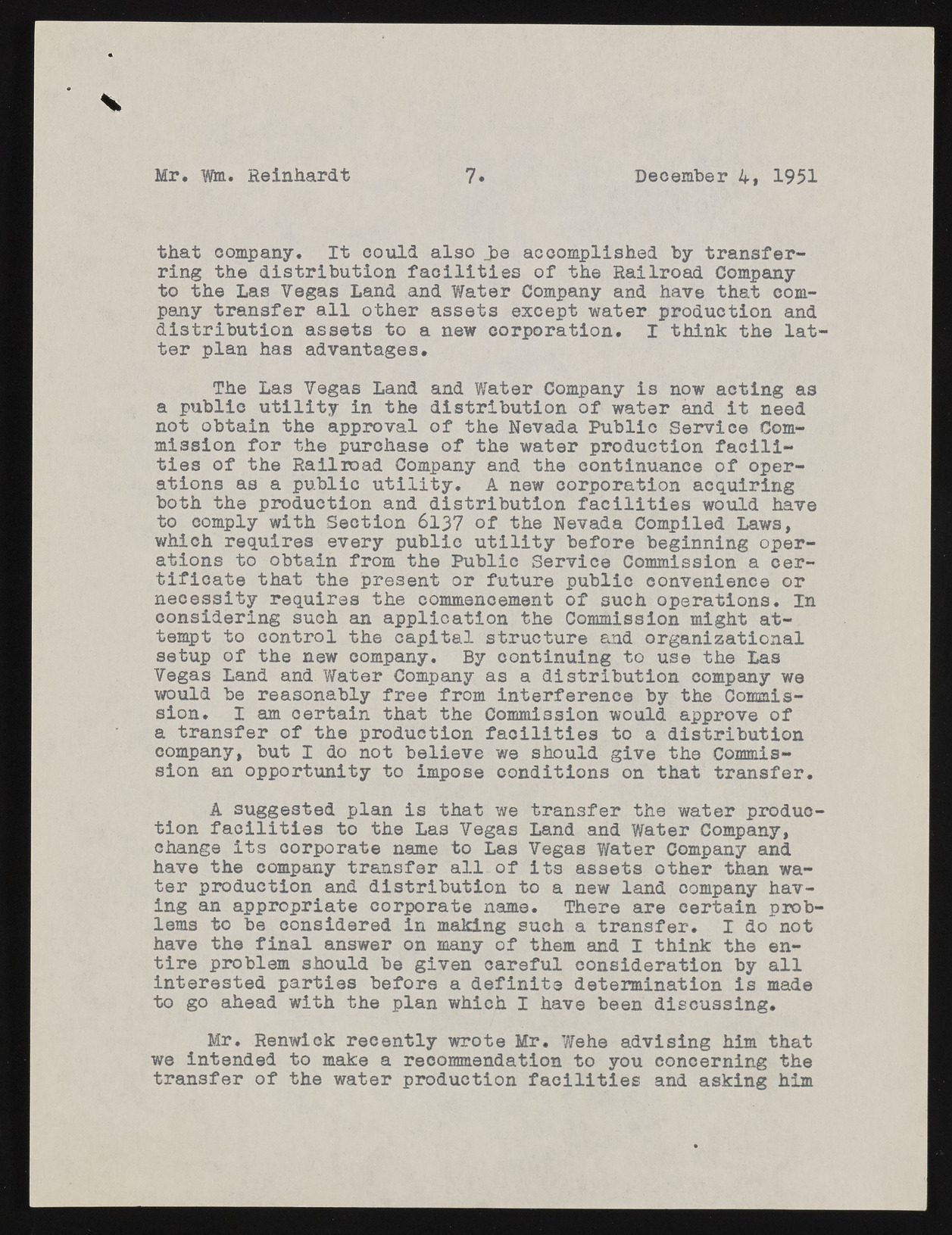Copyright & Fair-use Agreement
UNLV Special Collections provides copies of materials to facilitate private study, scholarship, or research. Material not in the public domain may be used according to fair use of copyrighted materials as defined by copyright law. Please cite us.
Please note that UNLV may not own the copyright to these materials and cannot provide permission to publish or distribute materials when UNLV is not the copyright holder. The user is solely responsible for determining the copyright status of materials and obtaining permission to use material from the copyright holder and for determining whether any permissions relating to any other rights are necessary for the intended use, and for obtaining all required permissions beyond that allowed by fair use.
Read more about our reproduction and use policy.
I agree.Information
Digital ID
Permalink
Details
Member of
More Info
Rights
Digital Provenance
Publisher
Transcription
Mr. Wm. Reinhardt 7 December 4* 1951 that company. It could also Jae accomplished by transferring the distribution facilities of the Railroad Company to the Las Vegas Land and Water Company and have that company transfer all other assets except water production and distribution assets to a new corporation. I think the latter plan has advantages. The Las Vegas Land and Water Company is now acting as a publie utility in the distribution of water and it need not obtain the approval of the Nevada Public Service Commission for the purchase of the water production facilities of the Railroad Company and the continuance of operations as a public utility. A new corporation acquiring both the production and distribution facilities would have to comply with Section 6137 of the Nevada Compiled Laws, which requires every public utility before beginning operations to obtain from the Public Service Commission a certificate that the present or future public convenience or necessity requires the commencement of such operations. In considering such an application the Commission might attempt to control the capital structure and organizational setup of the new company. By continuing to use the Las Vegas Land and V/ater Company as a distribution company we would be reasonably free from interference by the Commission. I am certain that the Commission would approve of a transfer of the production facilities to a distribution company, but I do not believe we should give the Commission an opportunity to impose conditions on that transfer. A suggested plan is that we transfer the water production facilities to the Las Vegas Land and Water Company, change its corporate name to Las Vegas Water Company and have the company transfer all of its assets other than water production and distribution to a new land company having an appropriate corporate name. There are certain problems to be considered in making such a transfer. I do not have the final answer on many of them and I think the entire problem should be given careful consideration by all interested parties before a definite determination is made to go ahead with the plan which I have been discussing. Mr. Renwick recently wrote Mr. Wehe advising him that we intended to make a recommendation to you concerning the transfer of the water production facilities and asking him

